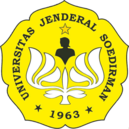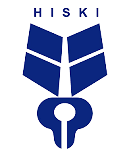CALENGSAI : KREATIVITAS DAN INOVASI PEKERJA SENI DALAM MEMPERTAHANKAN KESENIAN TRADISIONAL
Abstract
Calung Lengger is one of the traditional art from Banyumas, Central Java. Calung Lengger is a tool / media to represent the identity of Banyumas community. Calung Lengger experiencing ups and downs in its development, caused by the progress of science and technology. This influence is very large for the development of the traditional arts of calung and lengger. This traditional art of calung lengger must be defended in order to maintain the existence of art itself. Various efforts are made by art workers by innovation and creation. This innovation and creations by incorporating other traditional arts such as lion dance, art from Tiongkok. This can happen because of the intensive interaction by using the symbols that exist in each art. Symbolic interaction is a continuous relationship between symbols and intercations. The symbol used is a representation of a mutually agreed phenomenon. The interaction between Banyumas and Tionghoa community is bridged by symbols, and the symbol is a verbal symbol that uses art as a means of representing a phenomenon. This intensive interaction also results in a combination of two cultures that occur in a harmonious and peaceful life.References
Barth, Frederick, 1969. Ethnic Group and Boundaries. Little Brown and Company, Boston
Baudrillad, Jean. [1970] 1998. The Counsumer Society: Myths and Structures, Sage Publications. London.
Berger, Arthur Asa, 2010 Tanda-tanda Dalam Kebudayaan Kontemporer, Tiara Wacana
Berry, JW .1988. Field Methods in Cross Cultural Research. Sage Publications, London
-------------------. Immigrations, Acculturation, and Adaptation. Queens University. Canada
Bordieu, Piere ,1977. Translated by Richard Nice. Outline of A Theory of Practice. Cambridge University Press. London
-------------------. dalam D. Hendropuspito, OC. 1989. Sosiologi Sistematik. Kanisius, Jakarta, hal. 149.
Borofsky, R. 1994, The Culture in Motion dalam R. Borofsky (ed), Assesing Cultural Anthropology, Mc.Graw-Hill, New York
Cannadine, D. 1992. The context, performance and meaning of ritual: The British monarchy and the inventon of tradition, c 1820-1977. In E. Hobasbawm and T. Ranger (eds) The Invention of Tradition. Cambridge:Canto
Geertz, Clifford. 1973. The Interpretation of Culture, Basic Books
Gondomono.1995. Membanting Tulang Menyembah Arwah Kehidupan Kekotaan Masyarakat China, PT Pustaka Firdaus
Hall, Stuart. 1997. Cultural Identity. Sage Publication, London.
.................... 2003. Representation: Cultural Representations and Signifying Practises. Sage Publication, London.
Harris, Marvin. 1981. Cultural Materialism: The Struggle for a Science of Culture. Random House, New York.
Herusatoto, Budiono. 1984. Simbolis Dalam Budaya Jawa. PT Gramedia, Jakarta.
Koentjaraningrat. 1990. Pengantar Ilmu Antropologi, Rineka Cipta.
NN. 1996. Anatomi Sosial Budaya Masyarakat Banyumas di Kabupaten Banyumas, Bappeda Tingkat II, Banyumas, Jawa Tengah
NN. 2016. Informasi Terseleksi Deposit Koleksi Jawa Tengah Tahun 2016, Bappeda , Semarang, Jawa Tengah.
Noveni, Nia Anggraini. 2010. Transendensi Diri Pada Pencetus Tari Calengsai, Universitas Gajah Mada, Yogyakarta.
Waluyo, Herman. 1988. “Kebudayaan Jawa Sebagai Sumber Kebudayaan Nasional”, Makalah Temu Budaya Daerah Jawa Tengah, UNS, Surakarta.
Data Internet
Suara Merdeka.co.id. 2010
Supriatna, Nana. Trybawulang.blogspot.com. 2014
Republika.co.id. Lestarikan Kesenian Banyumas, 12 Juli 2015
Authors who publish with Jurnal Ilmiah Lingua Idea agree to the following terms:
- Authors retain copyright and grant the journal right of first publication with the work simultaneously licensed under a Creative Commons Attribution License (CC BY-SA 4.0) that allows others to share the work with an acknowledgment of the work's authorship and initial publication in this journal.
- Authors are able to enter into separate, additional contractual arrangements for the non-exclusive distribution of the journal's published version of the work (e.g., post it to an institutional repository or publish it in a book), with an acknowledgment of its initial publication in this journal.
- Authors are permitted and encouraged to post their work online (e.g., in institutional repositories or on their website) prior to and during the submission process, as it can lead to productive exchanges, as well as earlier and greater citation of published work.





















.png)




_.png)


